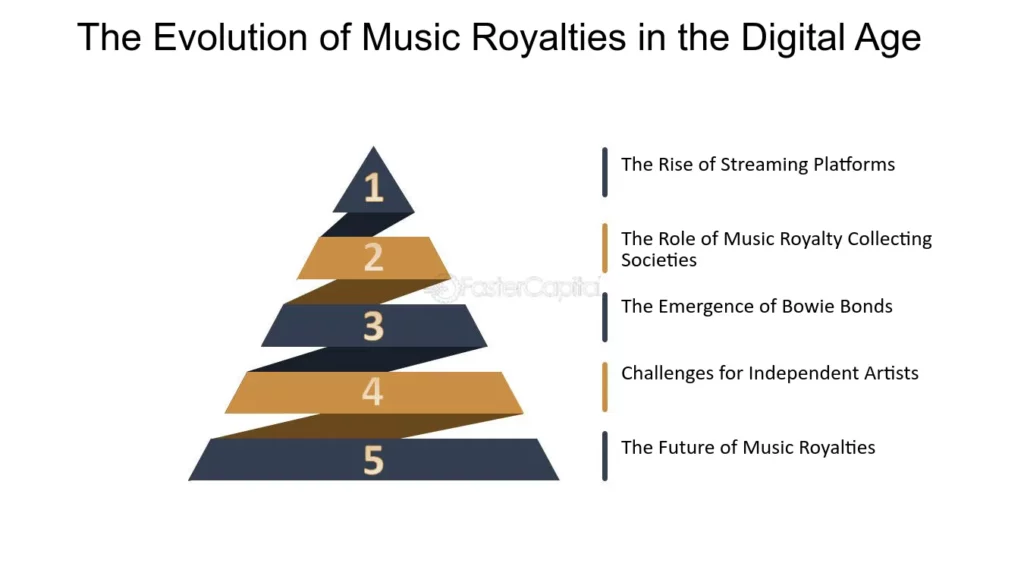Streaming services have transformed the music industry. They’ve revolutionized how people consume music, offering convenience and variety. The laws surrounding “streaming services royalties” are complex.
Artists often find themselves entangled in debates over fair compensation. This article dives into how these royalties are structured, the ongoing legal debates, and what it means for artists and the industry.
Key points:
Streaming services revolutionize music consumption.
Royalties and their distribution are hotly debated.
Legal frameworks strive to balance the interests of artists, services, and listeners.
Fair compensation remains a crucial issue.
Streaming services operate on a subscription or ad-supported model.
Users either pay a monthly fee or endure ads to access a vast music library.
With royalties, the revenue generated gets pooled. After covering operational costs, the remaining funds are split. Here’s where it gets tricky: how should these “streaming services royalties” be divided?
The pro-rata model dominates the current landscape. It’s straightforward but controversial. This system distributes revenue based on each artist’s share of total streams.
For instance, if an artist’s song accounts for 1% of all streams, they get 1% of the royalty pool. This method often favours famous artists, leaving lesser-known musicians with meagre earnings. Critics argue it perpetuates inequality within the industry.
The user-centric payment system (UCPS)
The user-centric payment system offers a more equitable alternative. Under UCPS, a subscriber’s fee directly supports the artists they listen to. If you only listen to indie bands, your subscription money goes to those bands, not to top-charting pop stars. Advocates claim this model better supports niche and emerging artists, ensuring they receive fairer compensation.
Despite its appeal, the user-centric payment system faces significant hurdles. Implementing it requires overhauling current systems, which is costly and complex.
Streaming giants like Spotify and Apple Music have hesitated to adopt this model. They argue that operational costs and complexities outweigh the benefits. As a result, the pro-rata system persists, sparking ongoing legal and ethical debates.
The royalty rates themselves are another contentious issue. In the United States, the Copyright Royalty Board sets these rates. The board reviews and adjusts them every five years, considering various factors, including industry trends and economic conditions. However, these adjustments often lead to disputes between streaming services and artists.
The Copyright Royalty Board
The Copyright Royalty Board made headlines in 2018 by proposing a significant increase in royalty rates. The board recommended raising the rate for interactive streaming services by 44%, phased in over five years. This decision was met with mixed reactions.
Artists and their advocates celebrated it as a step towards fairer compensation. On the other hand, streaming services balked at the increased costs, warning of potential price hikes for consumers.
The battle didn’t end there. Spotify, Google, Pandora, and Amazon challenged the Copyright Royalty Board’s decision, arguing the rates were too high. Their appeal sparked a lengthy legal battle, illustrating the complexities of determining fair “streaming services royalties.”
The U.S. Court of Appeals for the D.C. Circuit upheld the CRB’s decision, marking a victory for artists. Yet, the legal wrangling underscored the industry’s ongoing tensions.
The situation varies internationally. In Europe, for instance, royalty rates and distribution methods differ from country to country. The European Union has implemented directives to standardize digital market rules, including royalty payments.
Streaming services royalties
National interpretations and implementations can vary, leading to a patchwork of regulations. This complexity often frustrates artists and rights holders, who must navigate different legal landscapes to ensure they receive their due.
Emerging markets add another layer of complexity. Streaming services proliferate in regions like Africa, Asia, and Latin America. These markets offer tremendous potential for artists but also pose unique challenges.
Local laws, economic conditions, and market dynamics influence how royalties are structured and distributed. Artists and streaming services must adapt to these varying conditions to succeed.
Technological advancements also play a crucial role. Blockchain technology, for instance, promises greater transparency in royalty distribution. By creating immutable records of streaming data, blockchain can ensure artists receive accurate and timely payments.
Although widespread adoption remains challenging, several startups and industry players are exploring blockchain-based solutions.
Artificial intelligence and data analytics are also reshaping the landscape. These technologies can analyze vast streaming data to identify patterns and trends.
Legal and ethical questions
They can help streaming services optimize their algorithms, ensuring listeners are exposed to a diverse range of artists. Artificial intelligence can assist in detecting and addressing copyright infringements, protecting artists’ rights and ensuring they receive their rightful royalties.
While technology offers promising solutions, it also raises new legal and ethical questions. Data privacy is a growing concern. Streaming services collect extensive data on listening habits, preferences, and behaviours.
It is crucial to ensure that this data is used ethically and transparently. Laws must evolve to address these concerns, balancing innovation with privacy and fairness.
Public awareness and advocacy also play a vital role. Artists, industry groups, and activists are increasingly vocal about the need for fair “streaming services royalties.”
Copyright is failing artists: Here’s what could replace it(Opens in a new browser tab)
#BrokenRecord movement
Campaigns like the #BrokenRecord movement highlight the struggles of artists in the streaming era. These efforts aim to create a more equitable industry by raising awareness and pushing for legal reforms.
The future of “streaming services royalties” hinges on finding a balance. Streaming services, artists, and listeners all have vested interests in the system’s success.
Legal frameworks must evolve to address changing technologies and market dynamics. Stakeholders must collaborate, seeking solutions that ensure fair compensation for artists while maintaining the viability of streaming platforms.
The landscape of “streaming services royalties” is dynamic and multifaceted. The industry faces numerous challenges and opportunities, from the pro-rata and UCPS models to international variations and technological advancements.
Ongoing legal battles and advocacy efforts highlight the need for continuous evolution and adaptation. Finding equitable solutions for all stakeholders remains critical as the music industry transforms.
